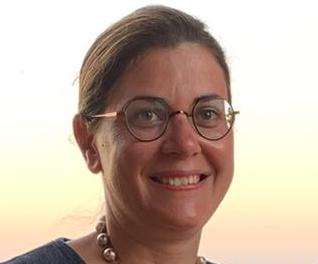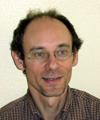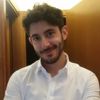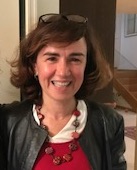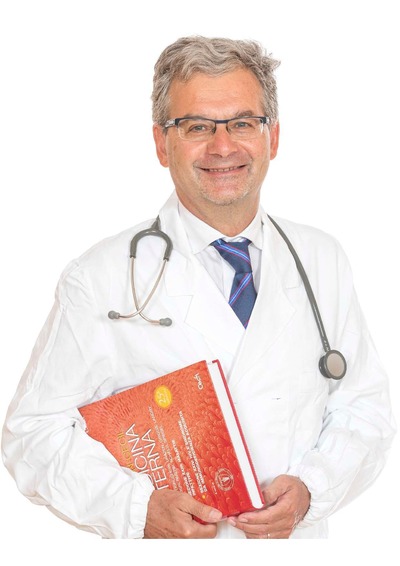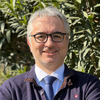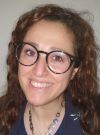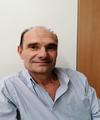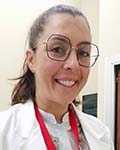Studying at the University of Verona
Here you can find information on the organisational aspects of the Programme, lecture timetables, learning activities and useful contact details for your time at the University, from enrolment to graduation.
Academic calendar
The academic calendar shows the deadlines and scheduled events that are relevant to students, teaching and technical-administrative staff of the University. Public holidays and University closures are also indicated. The academic year normally begins on 1 October each year and ends on 30 September of the following year.
Course calendar
The Academic Calendar sets out the degree programme lecture and exam timetables, as well as the relevant university closure dates..
| Period | From | To |
|---|---|---|
| 1 SEMESTRE LM-6 | Nov 20, 2023 | Feb 23, 2024 |
| 2 SEMESTRE LM-6 | Apr 2, 2024 | Jun 21, 2024 |
| Session | From | To |
|---|---|---|
| 1° semestre LM-6 | Feb 26, 2024 | Mar 29, 2024 |
| 2° semestre LM-6 | Jun 23, 2024 | Jul 31, 2024 |
| Sessione Autunnale LM-6 | Sep 2, 2024 | Sep 27, 2024 |
| Period | From | To |
|---|---|---|
| Festa di Ognissanti | Nov 1, 2023 | Nov 1, 2023 |
| Festa dell'Immacolata | Dec 8, 2023 | Dec 8, 2023 |
Exam calendar
To view all the exam sessions available, please use the Exam dashboard on ESSE3. If you forgot your login details or have problems logging in, please contact the relevant IT HelpDesk, or check the login details recovery web page.
Should you have any doubts or questions, please check the Enrollment FAQs
Academic staff
Study Plan
The Study Plan includes all modules, teaching and learning activities that each student will need to undertake during their time at the University.
Please select your Study Plan based on your enrollment year.
1° Year
| Modules | Credits | TAF | SSD |
|---|
2° Year It will be activated in the A.Y. 2024/2025
| Modules | Credits | TAF | SSD |
|---|
1 module among the following1 module between the following| Modules | Credits | TAF | SSD |
|---|
| Modules | Credits | TAF | SSD |
|---|
1 module among the following1 module between the followingLegend | Type of training activity (TTA)
TAF (Type of Educational Activity) All courses and activities are classified into different types of educational activities, indicated by a letter.
Macromolecole biologiche, interazioni e reti (2023/2024)
Teaching code
4S011585
Credits
9
Language
English
Scientific Disciplinary Sector (SSD)
BIO/10 - BIOCHEMISTRY
Courses Single
Not Authorized
The teaching is organized as follows:
Teoria
Laboratorio 2 [TURNO 1]
Laboratorio 2 [TURNO 2]
Laboratorio 1 [TURNO 1]
Laboratorio 1 [TURNO 2]
Learning objectives
The course aims to foster the understanding of the system-level function of complex biomolecular networks with specific biological functions (signal transduction, metabolism, regulation of gene expression) starting with the basic biomolecular components. The student, with the help of computer visualization, will analyze the structure/function relationship of the major classes of biological macromolecules (proteins, nucleic acids, carbohydrates, lipids) and will be able to predict and study their interaction in a physiological and pathological context. The integration of theoretical- computational analysis with laboratory exercises aims at studying biomolecular interactions and the formation of supramolecular complexes, enabling the student to develop bottom-up analytical skills, which will be applied to specific biomedical problems. Teaching involves the integration of theory lectures, laboratory exercises, and group work. Analysis of scientific articles related to the topics covered in the course is also offered.
Upon completion of the course, the student will have acquired:
a) thorough knowledge of biological macromolecules and their functional and pathological assemblies;
b) comprehensive knowledge of the methodologies of theoretical and experimental analysis of macromolecules and supramolecular complexes, including biochemical and biophysical techniques;
c) ability to apply the acquired knowledge for the analysis of biomolecular networks in a physiological and pathological context according to a multiscale investigation approach;
d) ability to analyze the emergent properties at the system level of specific biomolecular networks; and
e) ability to work in a team, interpret the results of experimental analyses, and communicate them according to the standards of the scientific community.
Prerequisites and basic notions
Basic knowledge of general and organic chemistry, physics and biochemistry.
Program
------------------------
UL: Theory
-----------------------
The course is based on five main modules and practical sessions which will be partly managed using flipped classroom and team-based learning.
Theoretical part (42 hours):
1) Structural biology of macromolecules and macromolecular complexes
• Why structural biology? The organization of life at the molecular level
• Fundamentals of protein structure: chemical and physical interactions that stabilize protein structure; folding, folding and function of proteins; soluble proteins vs. membrane proteins; fully folded and intrinsically disordered proteins; protein-protein oligomeric assemblies; enzymes, co-enzymes and metal ions; disease-associated point mutations that affect protein structure/function and interactions;
• Fundamentals of nucleic acids structure: Secondary structure of DNA and deviation from ideality; structural and functional differences between DNA and RNA; tertiary structure of RNA;
• Fundamentals of lipids and membrane structure: classes of lipids and liquid crystalline phases; curvature of the membranes; changes in the composition of membranes; fusion and fission of membranes; BAR domains and membrane curvature; liposomes, nanovesicles and nanodiscs;
• Examples of functional macromolecular complexes: gene-specific transcription factors: structural motifs (leucine zipper, zinc finger, p21Ras, binding specificity); macromolecular complexes involved in signal transduction; macromolecular complexes in viruses.
In-depth bioinformatics: IT tools for structural biology: Protein Data Bank; UniProt; molecular graphics and visualization: PyMol
2) Interaction between light and macromolecules to study structural, functional and dynamic properties
• Fundamentals of absorption and emission spectroscopy; intrinsic fluorescence; fluorescence-based energy transfer (FRET); circular dichroism; light-scattering and diffusion techniques to study hydrodynamic properties.
3) Binding processes involving macromolecules
• A summary of thermodynamics and chemical equilibria; the standard "biochemical" state; introduction to the theoretical models describing the binding of ligands to macromolecules;
• Kinetics of biochemical systems; processes of association and dissociation; factors influencing protein-protein interactions;
• Experimental techniques for the study of biochemical bonds: isothermal titration calorimetry; differential scanning calorimetry; surface plasmon resonance and similar optical biosensing technologies; mass spectrometry.
4) High resolution techniques to resolve the structure of macromolecules and their complexes
• Elements of X-ray crystallography, liquid state nuclear magnetic resonance spectroscopy; the revolution of cryogenic electron microscopy.
5) From single molecules to biological networks
• The systems biology paradigm: why it is necessary; top-down vs. modeling bottom-up. Emerging properties. Mathematical modeling of biomolecular networks: implementation of static and dynamic models of biomolecular networks. Deterministic and stochastic processes in biology. Standard analysis of biological system models.
• Examples of biological networks and their alteration in diseases: modeling of gene expression, metabolic systems and signal transduction systems.
Computational in-depth study: IT tools for the implementation of static and dynamic models in systems biology; static model implementation examples; simulation of a dynamic model of increasing complexity. Implementation of a computational model of G protein signaling and cycling (working group). For each topic, comparisons between physiological and pathological conditions will be made and discussed.
------------------------
UL: Laboratory
----------------------- -
Students will be divided into groups. Using a flipped-classroom methodology, each group will perform 4 different experiments which will then be presented to the other groups. Each group will actively participate in the discussion and evaluation of the performances of the other groups.
The topics of the experiments will cover the following areas:
- DNA condensation: study of DNA-protein interactions (techniques: CD and DLS)
- Macromolecular structure/function
• mCardinal: an intrinsically fluorescent protein (protein structure; chemical denaturation: techniques: CD and fluorescence spectroscopy)
• structure/function of a calcium sensor protein: myristoylated and non-myristoylated recoverin (techniques: CD and fluorescence spectroscopy).
- Protein-lipid interaction
• interaction of myristoylated/non-myristoylated recoverin with a liposome that mimics a biological membrane
- Protein-ligand interaction
• Calmodulin mutants and arrhythmias: the role of calcium (techniques: DSC and ITC)
• Calmodulin mutants and arrhythmias : interaction with the ryanodine receptor (techniques: DSC and ITC)
- Nuclear magnetic resonance (NMR) for high resolution investigations
• Calmodulin mutants and arrhythmias: protein-ligand interactions (1H and HSQC experiments)
Bibliography
Didactic methods
------------------------
UL: Theory/Laboratory
------------------------
Lectures, flipped classroom, team-based learning.
Learning assessment procedures
The examination consists in three distinct parts:
1) a written test, with open-ended questions, on the topics covered during the theoretical lectures and the basics of the experimental and computational techniques used in the exercises;
2) an individual report on one of the experimental tests carried out in the laboratory;
3) group exposition of a scientific paper on a topic related to the teaching, with particular reference to the investigative techniques used. The mode of examination is the same for non-attending and Erasmus students.
Evaluation criteria
In order to pass the examination, the student must demonstrate that he or she has fully achieved the predetermined educational objectives. The overall grade, in thirtieths, is the weighted sum of the evaluation obtained in the three parts (two-thirds, one-third, one-third, respectively). For the three tests, the following will be specifically assessed:
1) the depth of specific knowledge; the ability to make connections and deduce information of biomedical relevance; and the propriety of scientific language;
2) the accuracy of description of the experiment and the ability to make critical judgment in analyzing a scientific result;
3) the ability to organize teamwork, subject depth and critical reasoning, and communication skills.
Criteria for the composition of the final grade
Weighted average of the ratings obtained in the tests described above.
Exam language
English
Type D and Type F activities
Modules not yet included
Career prospects
Module/Programme news
News for students
There you will find information, resources and services useful during your time at the University (Student’s exam record, your study plan on ESSE3, Distance Learning courses, university email account, office forms, administrative procedures, etc.). You can log into MyUnivr with your GIA login details: only in this way will you be able to receive notification of all the notices from your teachers and your secretariat via email and soon also via the Univr app.
Student login and resources
Prova Finale
Per essere ammessi alla prova finale occorre avere conseguito tutti i crediti nelle attività formative previste dal piano degli studi, compresi quelli relativi all’attività di tirocinio. Alla preparazione della tesi sono assegnati 8 CFU.
La prova finale si compone della redazione e dissertazione di un elaborato di tesi sperimentale in lingua inglese. Per il lavoro di tesi lo studente avrà la supervisione di un docente dell’Ateneo di Verona, detto Relatore, ed eventuali correlatori in possesso almeno della laurea triennale anche se esterni al Corso di Laurea. Scopo della tesi è quello di impegnare lo studente in un lavoro di formalizzazione, progettazione e di ricerca, che contribuisca sostanzialmente al completamento della sua formazione professionale e scientifica. Il contenuto della tesi deve essere inerente a tematiche o discipline strettamente correlate al profilo professionale. Si ricorda che presentare tesi copiate o procurate da altri costituisce reato. (Legge 475/1925 tutt’oggi in vigore).
Valutazione della tesi
La valutazione della tesi sarà basata sui seguenti criteri: livello di approfondimento del lavoro svolto; contributo critico del laureando; accuratezza della metodologia adottata per lo sviluppo della tematica.
Punteggio finale
Il punteggio finale di Laurea è espresso in cento decimi ed è così formato:
• Media ponderata rapportata a 110 dei voti conseguiti negli 11 esami curriculari (arrotondata per eccesso o per difetto al numero intero più vicino);
• Discussione della Tesi: da 0 fino ad un massimo di 10 punti. La commissione di Laurea potrà attribuire ulteriori punti anche in base a: • Presenza di eventuali lodi ottenute negli esami sostenuti: fino ad 1 punto aggiuntivo; • Partecipazione ai programmi Erasmus: fino a 2 punti aggiuntivi; • Laurea entro i termini della durata normale del corso: 1 punto aggiuntivo. La lode può venire attribuita con parere unanime della Commissione ai candidati che conseguano un punteggio finale maggiore o uguale a centodieci.
Orario lezioni
In questa sezione è possibile visualizzare il file contenente l'orario delle lezioni.
Nel file è indicata anche l'aula di svolgimento delle stesse.
Il file viene aggiornato regolarmente; è possibile verificare la versione (o la data di ultimo aggiornamento) nell'apposita cella del file, in alto a sinistra.
Eventuali variazioni dell'ultimo minuto verranno comunicate dal Docente alla mail di classe il prima possibile.
In this section you can find the file containing the lesson timetable. The file also indicates the classroom where they are held. The file is updated regularly; you can check the version (or the date of last update) in the appropriate cell of the file, at the top left. Any last minute changes will be communicated by the Professor to the class email as soon as possible.
Documents
| Title | Info File |
|---|---|
|
|
pdf, it, 182 KB, 19/04/24 |
Appelli d'esame
In questa sezione è possibile visualizzare il file contenente il calendario degli appelli d'esame.
Il file viene aggiornato regolarmente; è possibile verificare la versione (o la data di ultimo aggiornamento) nell'apposita cella del file, in alto a sinistra.
Eventuali variazioni dell'ultimo minuto verranno comunicate dal Docente alla mail di classe il prima possibile.
In this section you can find the file containing the exam calendar. The file is updated regularly; you can check the version (or the date of last update) in the appropriate cell of the file, at the top left. Any last minute changes will be communicated by the Professor to the class email as soon as possible.
Documents
| Title | Info File |
|---|---|
|
|
pdf, it, 128 KB, 28/02/24 |
Compilazione piani di studio
Le attività a scelta dello studente (12 CFU, ambito D) comprendono insegnamenti impartiti presso l’Università di Verona.
Per la coorte 2023/2024, la compilazione del piano didattico potrà avvenire a valere dal secondo anno di corso.
ELENCO ATTIVITÀ AL 2° ANNO A.A. 2024/2025:
Oltre alle attività precedentemente citate, potranno essere selezionate quelle già previste nei gruppi di scelta al 2° anno, in modo da consentire agli studenti di sostenere in TAF D quelli non scelti in altri TAF.
Potranno essere aggiunte, inoltre, nel corso dell’anno eventuali seminari/attività varie/convegni previo accreditamento.
Il riconoscimento di tali CFU dovrà essere valutato dalla Commissione Didattica sulla base della coerenza delle attività scelte rispetto al percorso formativo del corso di studio. I crediti a scelta non sono vincolati, ma, in sede di valutazione finale, si tiene conto della coerenza e dell’adeguatezza delle scelte effettuate dallo studente nel quadro formativo complessivo. Pertanto è raccomandato di non scegliere attività che possano in gran parte risultare simili ad insegnamenti già presenti nel piano didattico del CL in SNSA, bensì di scegliere attività che apportino un reale arricchimento del percorso formativo.
Attività tipo F / D
La Commissione Didattica organizza l'offerta di alcune attività didattiche opzionali di tipo (D) realizzabili con:
• Seminari
• Insegnamenti offerti in altri Corsi di Studio
• Convegni e workshop
I seminari sono un’attività didattica che si propone di affrontare una tematica con un approccio interdisciplinare ed è svolta di norma in compresenza da più docenti, anche di SSD diversi.
Gli studenti scelgono di partecipare a convegni e/o seminari non organizzati dal CdL, liberamente purché attinenti al profilo professionale al fine di maturare i CFU richiesti dal piano di studi.
Il calendario e l’elenco delle attività didattiche elettive sono pubblicati nella sezione avvisi del sito internet del CdL.
Per quanto riguarda il riconoscimento di crediti relativi alle TAF di tipo D, la Commissione Didattica applica la seguente regola generale di conversione:
0.25 CFU per ogni ora di seminario o attività didattica frontale che non prevede esame.
La Commissione valuterà caso per caso la conversione dei CFU relativi ad insegnamenti presi da altri corsi di studio, fino ad un massimo di 6 CFU, a prescindere da quale fosse il numero di CFU dell’insegnamento nel corso di studi originale. Si fa presente che, nel caso in cui l’attività a scelta preveda il superamento di un esame, questo è essenziale per l’ottenimento dei CFU rispettivi, pur non contribuendo alla media ponderata finale della carriera dello studente.
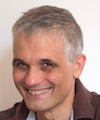
 giuseppe.bertini@univr.it
giuseppe.bertini@univr.it
 045-802-7682
045-802-7682
